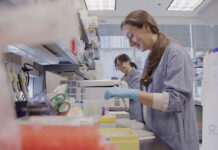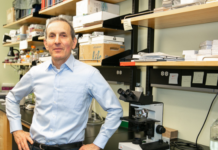Collaboration is an important part of scientific research, with scientists often coming together to combine their efforts and contribute towards shared scientific goals. As it turns out, collaboration is also an important trait amongst bacteria.
By communicating through a chemical language, and waiting until they have the right numbers, bacteria can be successful at tasks they wouldn’t have been able to accomplish on their own.
For this foundational discovery — a process known as quorum sensing — three scientists and longtime collaborators were named 2023 Canada Gairdner International Award laureates. The award was shared between Bonnie Bassler, Squibb Professor and Chair of the Department of Molecular Biology at Princeton University; E. Peter Greenberg, Nester Professor of Microbiology at the University of Washington; and Michael R. Silverman, a former Adjunct Professor of marine biology at Scripps Institute of Oceanography who retired in 2000.
The power of cooperation
It all started with an obscure bioluminescent marine bacterium known as Vibrio fischeri, which exhibits a particularly unique trait: it only lights up when it’s in a group. This behaviour was first characterized in the 1970s by the late J. Woodland Hastings, a professor at Harvard University, who described a signalling chemical of unknown structure responsible for the behaviour.
“There was a 10-year period where we thought this was happening, but nobody knew how,” Greenberg says. “And then one of my co-recipients, Mike Silverman, together with one of his graduate students, discovered the genes responsible [for this mechanism].”
“Genetics is a very powerful tool,” Silverman adds.
Greenberg, who had been training with Hastings, further characterized these genes independently. He also discovered a similar chemical signal in the pathogenic bacterium Pseudomonas aeruginosa. This is when the term quorum sensing, which describes this cell-to-cell communication, was born.
“[W]hat we and others have shown is that [bacteria] communicate with a chemical language. They count their numbers and they recognize when they have the right numbers,” explains Bassler.
To do this, bacteria secrete small molecules known as autoinducers. When a large enough group of bacteria have gathered, and enough autoinducers have been secreted, the bacteria can detect this chemical signal and start to work together as a group.
“If [bacteria] all do something together, they can be successful at tasks that they couldn’t accomplish if they acted as individuals. Because individually, they’re too small to make a difference,” Bassler continues.
Bassler — who once worked as a postdoctoral researcher with Silverman — brought these insights to a new level by demonstrating that this phenomenon is not obscure, but is instead common among bacteria.
In fact, the researchers discovered that quorum sensing behaviour is not limited to bacteria at all. Bassler also showed that bacteria can use this mechanism to communicate across species, and that it underlies bacterial interactions with viruses.
A new field of microbiology
Today, quorum sensing has emerged as a new field of microbiology. The discoveries made by Bassler, Greenberg, and Silverman not only changed our understanding of bacteria and their interactions with each other, but also opened the doors to using cell-to-cell communication in clinical settings.
As an example of this, Bassler and her collaborators have used quorum sensing to develop small-molecule therapies, which are less vulnerable to antimicrobial resistance than traditional antibiotics. Greenberg has also used quorum sensing to combat infections associated with cystic fibrosis.
Overall, the laureates agree that collaboration was a crucial aspect of their discoveries. By working together and building off each other’s ideas, Bassler, Greenberg, and Silverman have revolutionized the field of microbiology.
“It’s funny that the prize is for figuring out how groups of microbes […] work together and optimize behaviours, because that’s what we’re trying to do in the lab,” Bassler says.
“I find that […] kind of magical about the prize.”









































